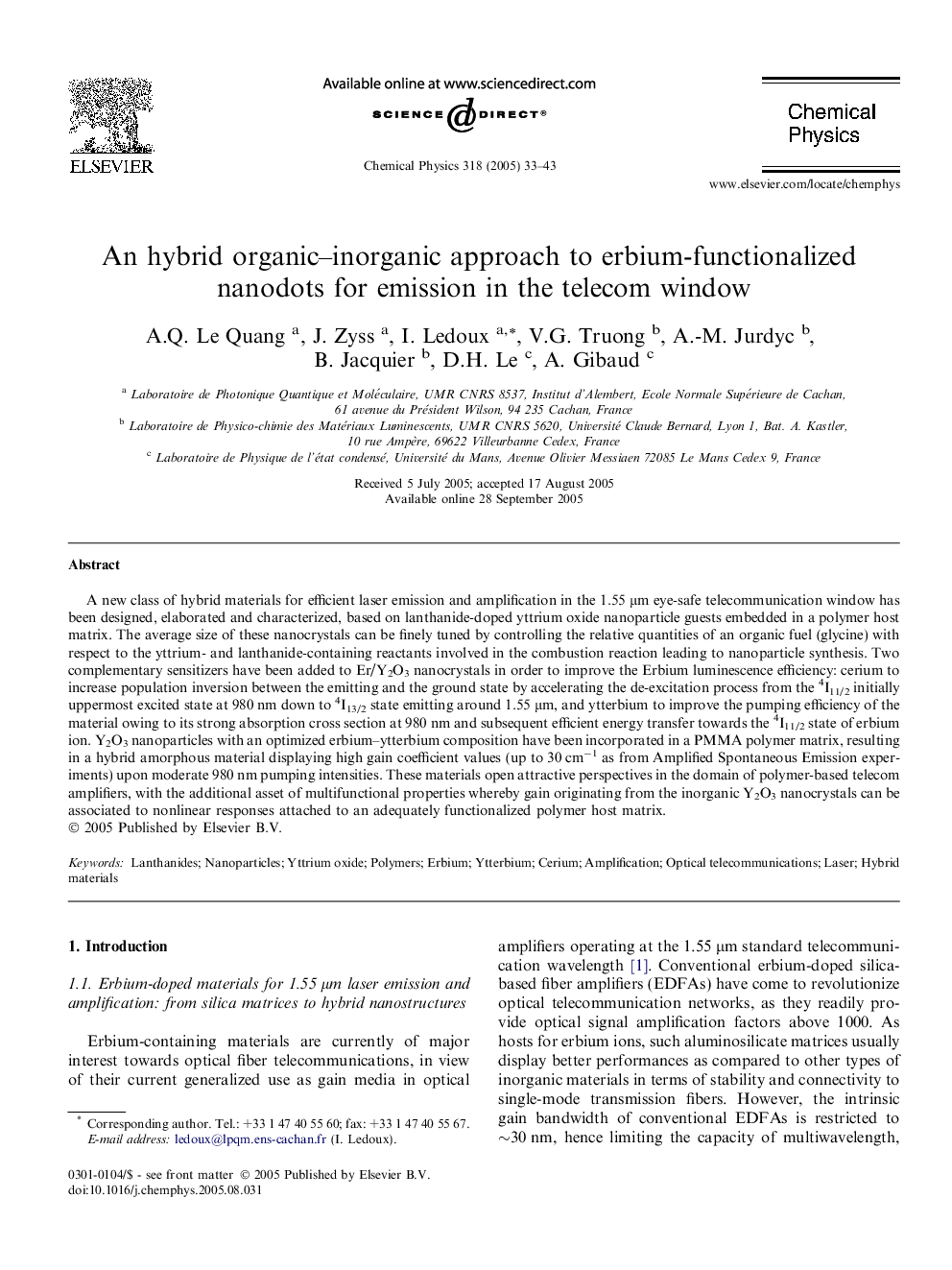| Article ID | Journal | Published Year | Pages | File Type |
|---|---|---|---|---|
| 9575110 | Chemical Physics | 2005 | 11 Pages |
Abstract
A new class of hybrid materials for efficient laser emission and amplification in the 1.55 μm eye-safe telecommunication window has been designed, elaborated and characterized, based on lanthanide-doped yttrium oxide nanoparticle guests embedded in a polymer host matrix. The average size of these nanocrystals can be finely tuned by controlling the relative quantities of an organic fuel (glycine) with respect to the yttrium- and lanthanide-containing reactants involved in the combustion reaction leading to nanoparticle synthesis. Two complementary sensitizers have been added to Er/Y2O3 nanocrystals in order to improve the Erbium luminescence efficiency: cerium to increase population inversion between the emitting and the ground state by accelerating the de-excitation process from the 4I11/2 initially uppermost excited state at 980 nm down to 4I13/2 state emitting around 1.55 μm, and ytterbium to improve the pumping efficiency of the material owing to its strong absorption cross section at 980 nm and subsequent efficient energy transfer towards the 4I11/2 state of erbium ion. Y2O3 nanoparticles with an optimized erbium-ytterbium composition have been incorporated in a PMMA polymer matrix, resulting in a hybrid amorphous material displaying high gain coefficient values (up to 30 cmâ1 as from Amplified Spontaneous Emission experiments) upon moderate 980 nm pumping intensities. These materials open attractive perspectives in the domain of polymer-based telecom amplifiers, with the additional asset of multifunctional properties whereby gain originating from the inorganic Y2O3 nanocrystals can be associated to nonlinear responses attached to an adequately functionalized polymer host matrix.
Keywords
Related Topics
Physical Sciences and Engineering
Chemistry
Physical and Theoretical Chemistry
Authors
A.Q. Le Quang, J. Zyss, I. Ledoux, V.G. Truong, A.-M. Jurdyc, B. Jacquier, D.H. Le, A. Gibaud,
